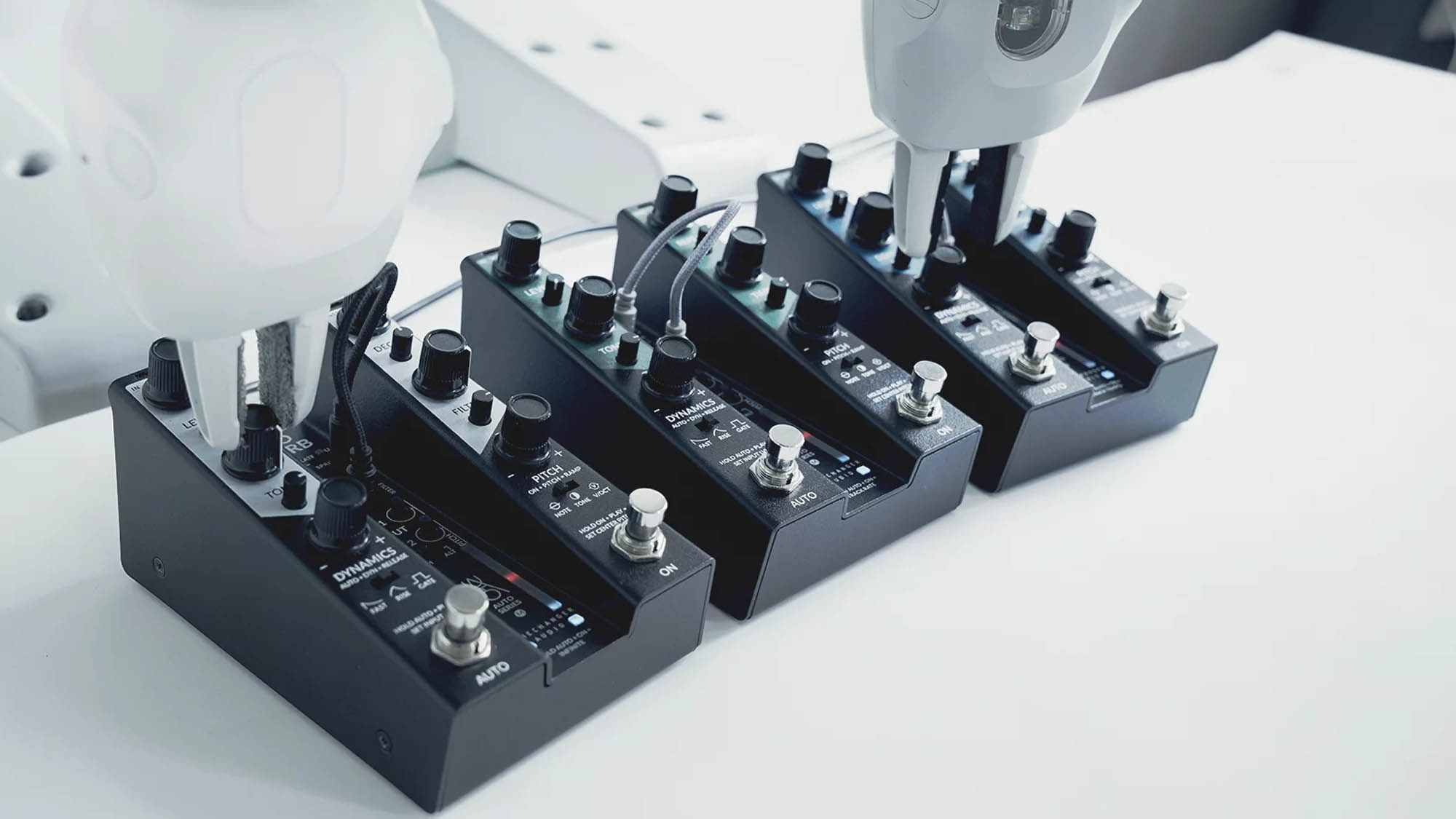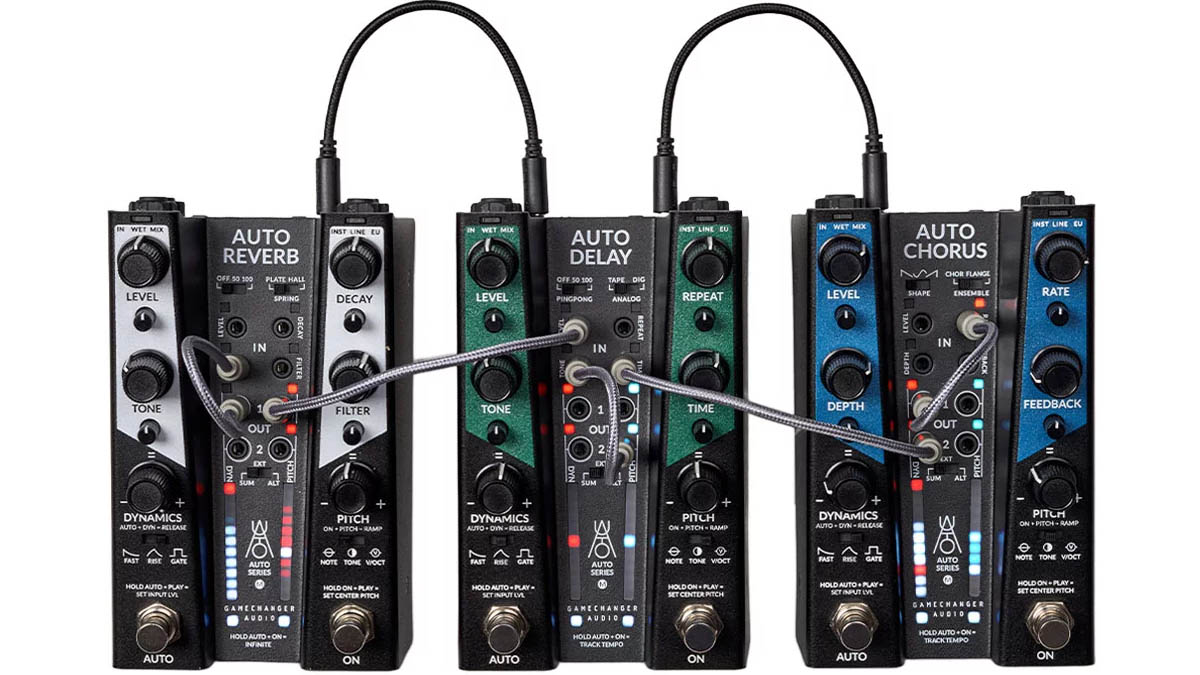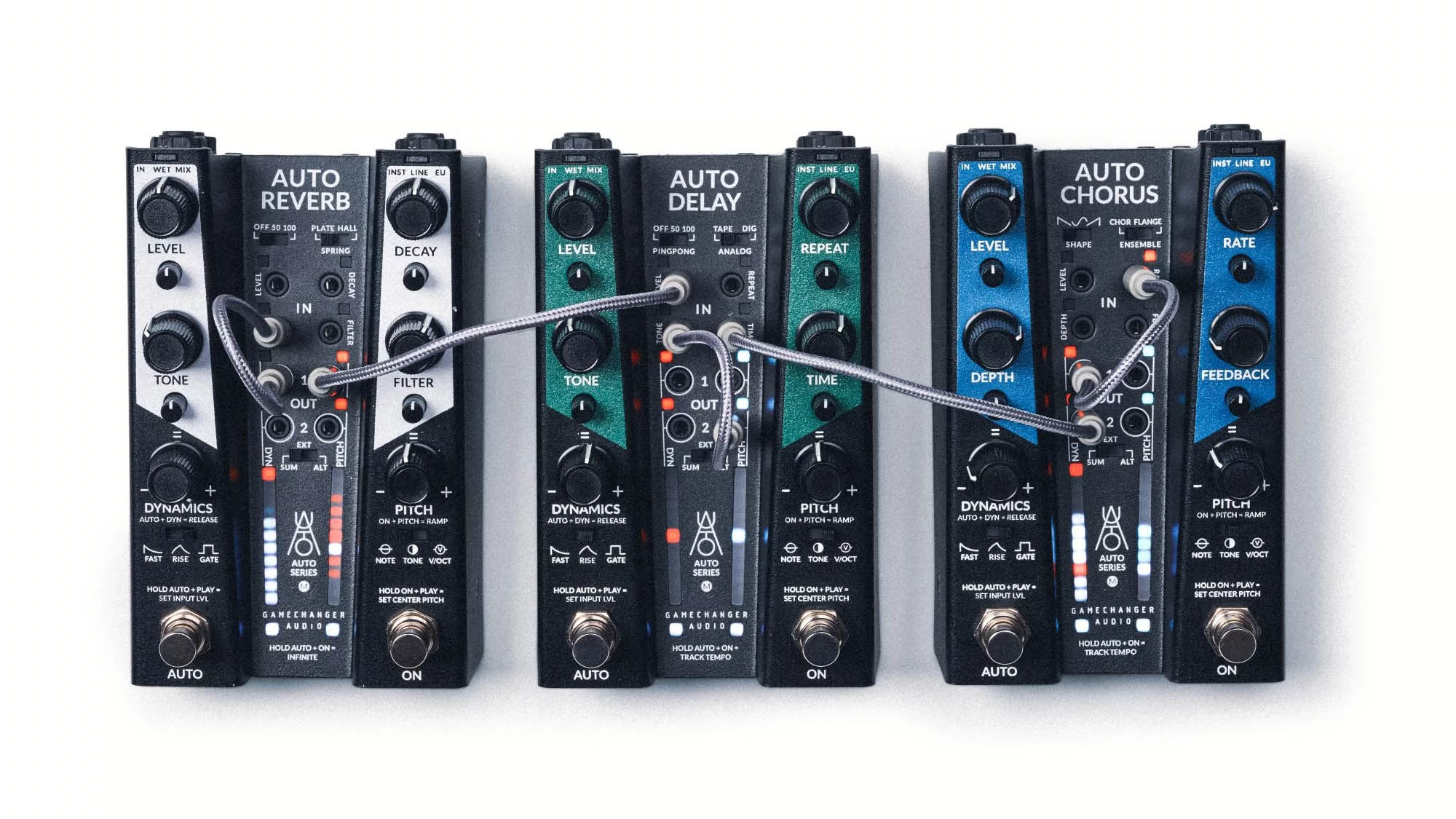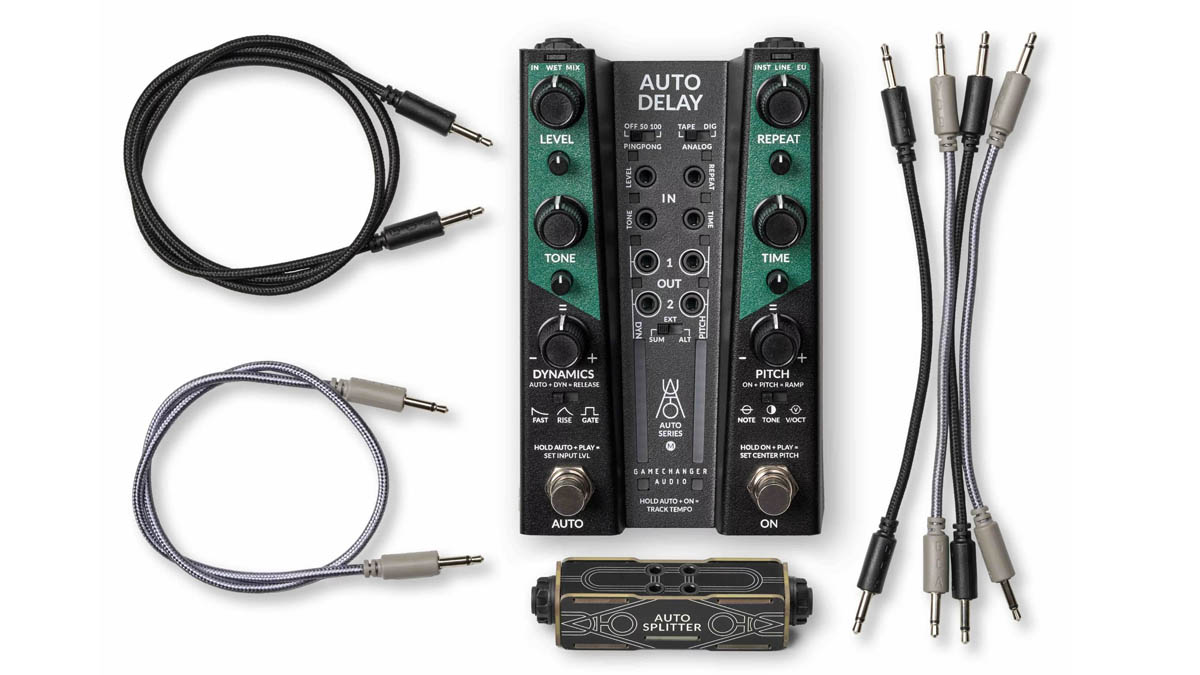“Designed to revolutionise the way musicians experience and interact with classic audio effects”: Gamechanger Audio unveils the Auto Series – reverb, delay and chorus pedals that let your performance automatically sculpt your sound
The Auto Series is a radical proposition. Offering automated control over effect parameters, these are pedals that track and respond to your playing dynamics and the notes you play

From the guitar effects pedal company that brought you the Bigsby vibrato in a pitch-bending stompbox comes another typically audacious piece of design, with Gamechanger Audio’s Auto Series presenting delay, reverb and chorus pedals as you’ve never seen them before.
Drawing design inspiration from modular synths, the Auto Series comes with a patch bay, and patch cables for connecting an effect parameter to a pair of onboard engines that handle all the automation.
Each pedal features a pair of automation engines, which together form this dynamic touch-responsive link between the effects sound and the way how you play your electric guitar – how hard you pick and where the volume controls are set – and the note choices and “overall instrument timbre”.
The automation can be precisely dialled in and customised so that the pedals react to the nuances of your playing, and has its own Auto footswitch, so automations can be toggled on and off.
You could even turn off automation entirely to use the pedals as a standard stompbox but we suspect that once you get used to this dynamic relationship between sound and performance, it'll be difficult to turn it off.
The Dynamics Engine is connected to how hard you hit the strings and so forth, while the Pitch Engine tracks note choices. Using a patch pay cable, you can link each of these automation settings to one of the pedal’s parameters.
If the concept is a little intimidating, how it works in practice looks very intuitive. Calibrating your playing dynamics is easy. Hold the Auto footswitch down and play to set the “centre” input level or “Dynamics Threshold”.
Get the MusicRadar Newsletter
Want all the hottest music and gear news, reviews, deals, features and more, direct to your inbox? Sign up here.
Parameters can then be tracked in Fast mode, so that parameters are changed in direct response to an increase in picking dynamics, or in Slow mode, so that they are tracked over a period of time, allowing for a more incremental change to the pedal’s parameters. And there is a Gate Dynamics Mode for instantly changing parameters without any attack or decay times.

The Pitch Engine is similarly calibrated, allowing you to set a centre pitch for the instrument. It features a Note Pitch mode that allows you to set a control voltage that responds to specific notes.
This sounds a little crazy but by the sounds of it you could set this so that a long delay is automatically applied to a solo when you’ve gone about the 9th fret on the third string.
The V/OCT mode is even more automated, tracking your playing and adjusting the control voltage accordingly as to how the notes you play correspond to the centre pitch.
Finally, Tone Mode performs a broader function, analysing the frequency spectrum, taking into account tonalities as well as pitch.
“This mode is useful when creating automation based on the general pitch range and the overall color of the tone,” says Gamechanger. “It can detect differences in signals between neck and bridge pickups of the same guitar and various positions of the tone knob on a guitar.”

Now, what of the effects themselves? Well, all have three selectable algorithms, all of which sound reassuringly familiar. We have the Auto Delay with its analogue, digital and tape delay modes. Auto Reverb has hall, plate and spring modes, while Auto Chorus has chorus, ensemble and flange.
It is how Gamechanger Audio presents them that makes them so attractive to the more adventurous player. These are built for experimentation, with each pedal shipping with six patch cables and offering 150 different patching combinations.
Players can also link pedals in the Auto Series in search of more sounds. Auto Reverb and Auto Delay offer some control over the stereo spread, allowing for setting up ping-pong delays,



Each pedal has LED indicators so that you can keep track of how the Automation is set up still is to hear it these in action and then imagine how you might use them.
Creating a flanger or chorus effect that get more intense the harder you strum? That’s the sort of thing that could get you very cool psychedelic Johnny Marr or Roger McGuinn sounds. You could set up a delay that gets bigger the higher you get up the fretboard. A spring reverb that makes a bigger splash the harder you hit the strings… This could be a radical new frontier for your pedalboard.
For more details, head over to Gamechanger Audio. The Auto Series pedals are available now, and they are priced £299 / $329.
Jonathan Horsley has been writing about guitars and guitar culture since 2005, playing them since 1990, and regularly contributes to MusicRadar, Total Guitar and Guitar World. He uses Jazz III nylon picks, 10s during the week, 9s at the weekend, and shamefully still struggles with rhythm figure one of Van Halen’s Panama.
“They didn’t like Prince’s bikini underwear”: Prince’s support sets for the The Rolling Stones in 1981 are remembered as disastrous, but guitarist Dez Dickerson says that the the crowd reaction wasn’t as bad as people think
“I said, ‘Are we sure we can write a song about death?’”: The story of Mike + The Mechanics' classic No.1 The Living Years














